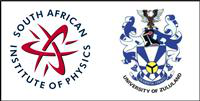Speaker
Abstract content <br> (Max 300 words)
There has been a great interest recently in the use of the orbital angular momentum (OAM) state of
light as information carrier in free-space quantum communication. This is mainly because the OAM state can be used to implement a higher dimensional state space for a single photon, allowing for the encoding of more than one bit per photon. To transmit quantum information successfully through a free-space optical channel, one needs to understand the effects of atmospheric turbulence on quantum entanglement.
In this work, we study both theoretically and experimentally the effects of atmospheric turbulence on the OAM entanglement between two photons. We try to answer the following question: what is the maximum distance over which one can propagate a pair of OAM entangled photons in turbulence before they lose their entanglement? We generate photon pairs via spontaneous parametric down-conversion and we propagate them through turbulence. We use Laguerre-Gaussian modes and the turbulent atmosphere is simulated with a single phase screen based on the Kolmogorov theory of turbulence. Only two level quantum systems (qubits) are considered. A full quantum state tomography is performed to reconstruct the state of the two-photons and we quantify entanglement with the concurrence. Our results show that OAM entanglement is severely affected by atmospheric turbulence and question the feasibility of long range free-space quantum communication with the OAM state of light.
Level for award<br> (Hons, MSc, <br> PhD)?
PhD
Apply to be<br> considered for a student <br> award (Yes / No)?
Yes
Main supervisor (name and email)<br>and his / her institution
Filippus S. Roux, fsroux@csir.co.za, CSIR National Laser Centre
Would you like to <br> submit a short paper <br> for the Conference <br> Proceedings (Yes / No)?
No

